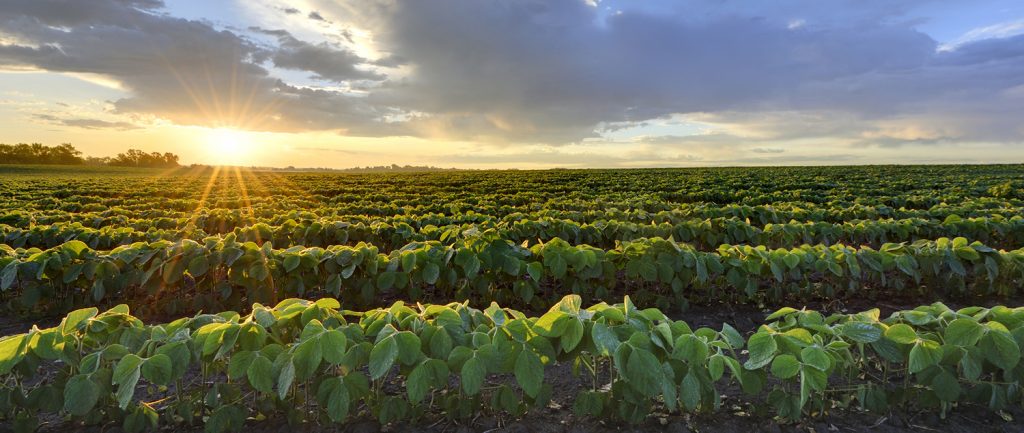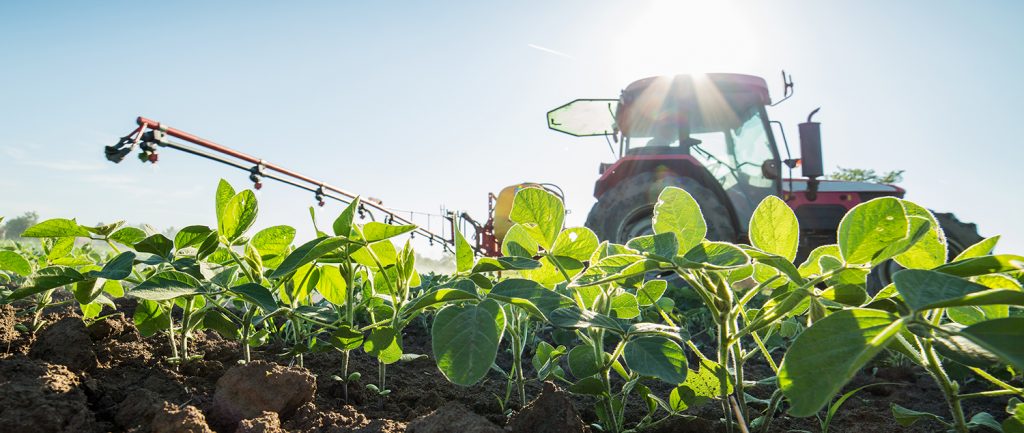Growers have recognized that soybeans will yield with attention to details. For a long time, growers and agronomists felt that soybean yields were stagnant relative to gains in corn yield. They were reluctant to invest time or resources to produce a high-yield crop. How times have changed, and we have multiple yield reports over 100 bushels across many states to prove it, including Randy Dowdy’s record-setting 171-bushel yield in 2016 in Georgia.
Getting down to basics, the key to increasing yield in soybeans is producing as many seeds per acre as possible, and the main solution is producing more pods per acre. To achieve that, growers need to focus on three things; choose a good variety, plant early to produce more pod-bearing nodes, and keep the plant healthy. Dr. Fred Below, University of Illinois crop physiologist and founder of the “Six Secrets of Soybean Success Research,” states that retaining one more pod per plant will increase yield approximately 2 bu/A.
There is increasing evidence that planting soybeans early pays. This makes sense because plants need as much time as possible to build nodes before flowering begins. Combine that with the right variety and seed treatments, and your crop is off to a great start. Remember yield potential is greatest the day seed is planted. From there on out, weather and plant health determine yield. Weather is an uncontrollable, but plant health is a controllable.
Plant health can be defined in three ways: abiotic, biotic and physiological. Inclement weather, low (acid) soil pH, marginal light soils are all abiotic stresses, some controllable and some not. Soil- or air-borne pathogens and insects that attack soybean seeds, roots, stems or foliage are biotic stresses. There are a slew of organisms just waiting to infect or infest your soybean plants at nearly every stage of development. And lastly is physiological health, defined as a plant’s ability to take up water and nutrients, photosynthesize to produce sugars (feedstock to all compounds in the plant) and the ability to move nutrients throughout the plant to meet demand.
Achieving plant health begins with:
- Selecting a variety that has the necessary resistances or tolerances to pests expected;
- Using a sound fertility program to make sure the plant is well-fed and not lacking any nutrient; and
- Supplementing that plan with necessary fungicides and insecticides to keep pests at bay.
Your goal is to keep soybean plants green and physiologically healthy for as long as possible, right up to physiological maturity when pods begin to turn yellow.
Calcium plays a key role in plant health, involved in cellular membrane integrity and cell wall strength along with water and nutrient transport. Calcium is taken up through the roots, moves through the xylem with the water stream, and flows out to individual cells through apoplastic pore spaces between cells and within cell walls. However, apoplastic movement of calcium to flowers and pods is naturally restricted, which leads to some abortion. Additionally, once calcium reaches its destination and becomes integrated into cells, it’s considered immobile and can’t move further within the plant on its own. This limits the plant’s ability to reuse this nutrient internally.
Improving plant biotic and physiological health requires a supply of readily available calcium. Fortalis® is a crop enhancement foliar spray that initiates the movement of calcium from cell to cell. Cells network together through small portals between adjacent cells that nutrients can pass through. Fortalis® takes advantage of that network and facilitates the movement of calcium to sites of high demand. Enabling symplastic flow of calcium has a direct effect on flower and pod set since apoplastic movement of calcium is naturally limited to these organelles.
Increased movement of calcium from cellular reserves to sites of need improves plant health, pod and seed set, and seed size. Combining Fortalis® with a fungicide and or insecticide application, as warranted, keeps foliage healthier, greener, and metabolically active longer. The combination of the two practices synergistically increases yield.
 Dr. Below said the difference between a 50- and a 62-bushel yield is largely the number of pods in the middle portion of the plant. “About 60% of soybean yield comes from the middle nodes (nodes 7 to 13) of a plant. It is important to protect leaves at those nodes with a fungicide. The closest leaves provide most of the energy for pods at those nodes.”
Dr. Below said the difference between a 50- and a 62-bushel yield is largely the number of pods in the middle portion of the plant. “About 60% of soybean yield comes from the middle nodes (nodes 7 to 13) of a plant. It is important to protect leaves at those nodes with a fungicide. The closest leaves provide most of the energy for pods at those nodes.”
Below’s “Six Secrets” research compared low and high management systems. In the low management system, seed treatments added 1.4 bushels and foliar protection added 2.6 bushels. In the high management system, seed treatments added 2.4 bushels and foliar protection added 3.2. Plant protection pays dividends.
Fortalis® has been proven to consistently increase yield and at the same time show a good return on investment. Across 176 trials from 2015 to 2017, Fortalis® averaged a 4.5-bushel yield increase with a single application of Fortalis® plus a fungicide, a gain of 8.1 percent. Across the trials, 84 percent showing a positive yield return and 74 percent showing a positive economic return, greater than the cost of product and application.

Producing high yield soybeans requires a systems approach, paying attention to detail and recognizing that yield increases are incremental. With the right combination of practices and technologies, growers can optimize their system. Fortalis® and tank mix options focus on improving plant health and pod set and should be among the technologies you adopt.
To learn more about Fortalis® visit www.FortalisYields.com.





